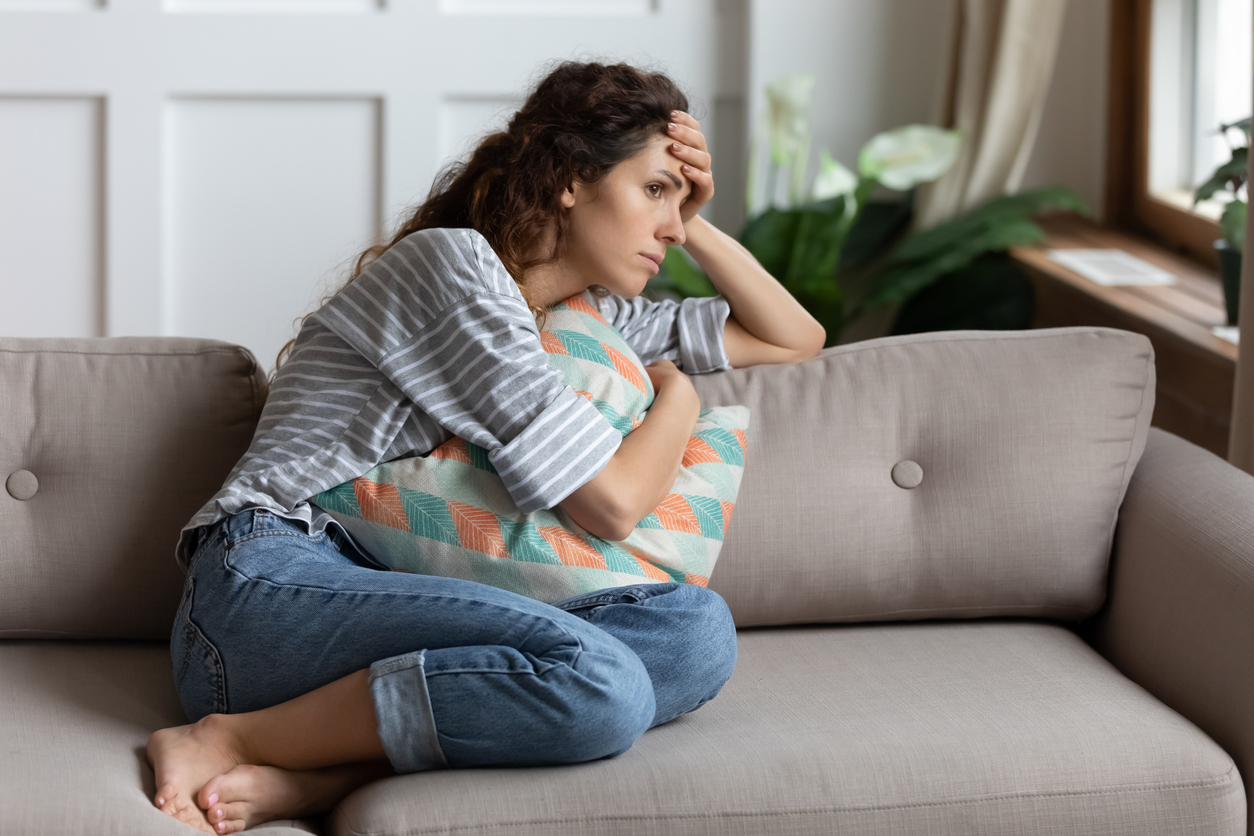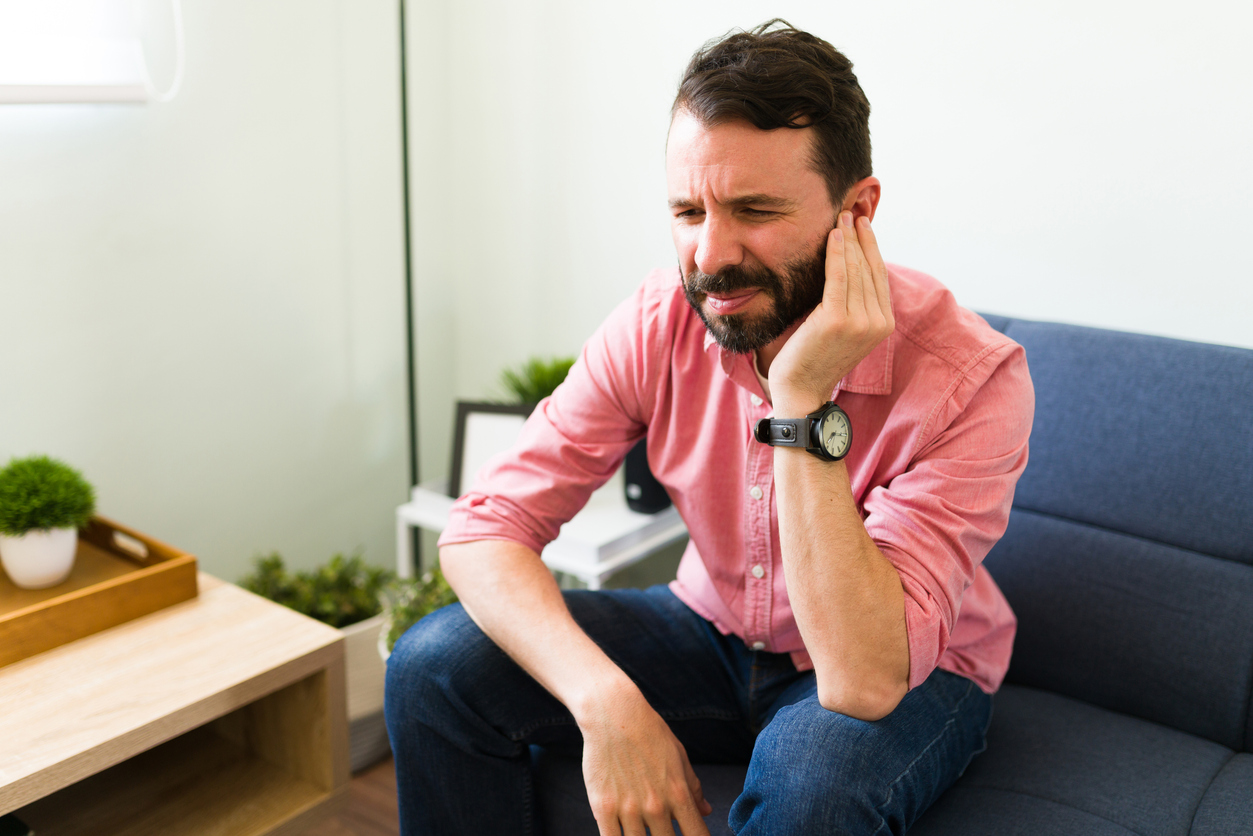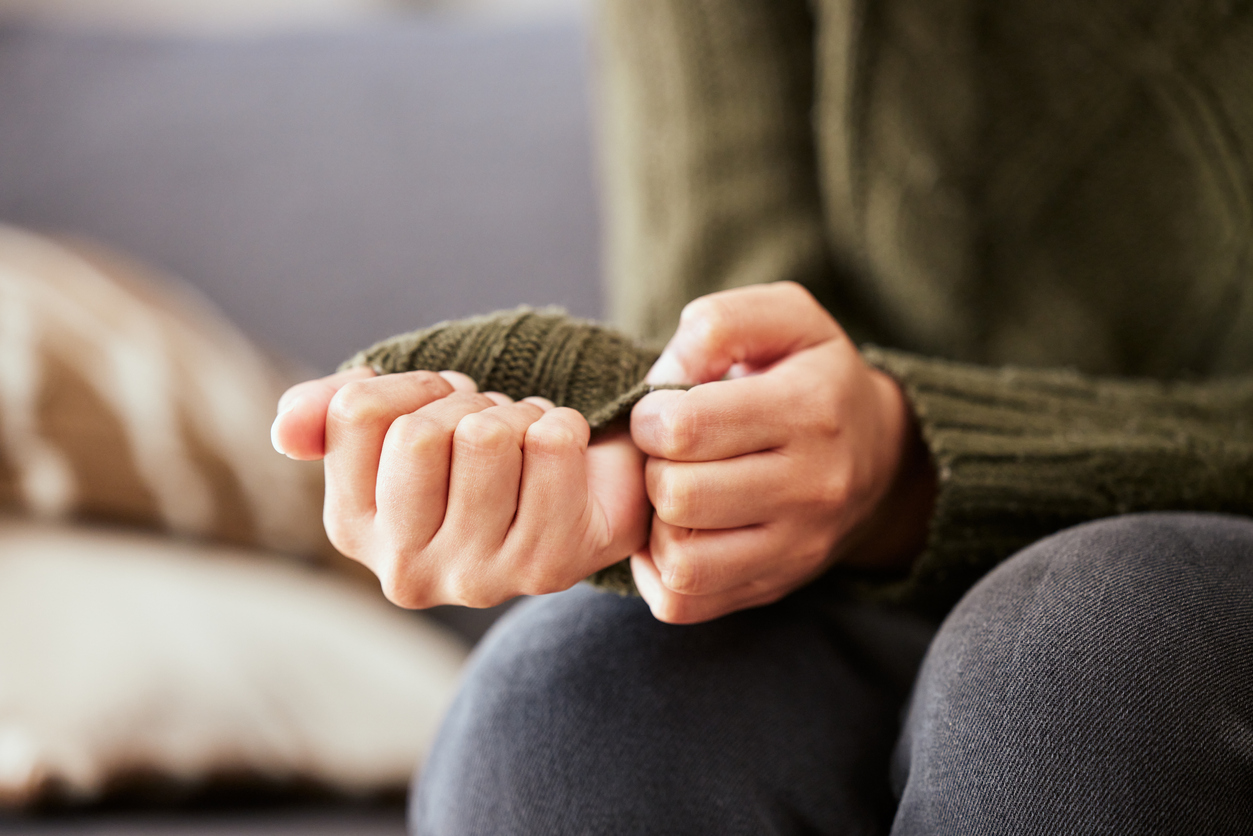Anxiety Can Cause a Rash
Recently, actor Ashley Benson opened up on TikTok about her experience with anxiety—specifically about how her stress was manifesting as a rash on her neck, chest, and shoulders. Many people empathized with Benson, while others were surprised that being super stressed can result in a rash, since the symptoms commonly associated with anxiety are a rapid heart rate, difficulty breathing, and perspiration.
However, “stress symptoms can affect your body, your thoughts and feelings, and your behavior,” says the Mayo Clinic, which explains that the physical effects of anxiety can manifest in various ways. “Stress that’s left unchecked can contribute to many health problems, such as high blood pressure, heart disease, obesity, and diabetes.”
Read on to find out more about how anxiety might be affecting you physically—and what you can do about it.
READ THIS NEXT: If You Notice This on Your Skin, Get a Blood Test, Experts Warn.
Many things can result in intense anxiety. According to the Banyan Treatment Centers, some of the most common triggers include stress, social events, and reminders of past trauma. These may not seem like deadly threats, but your body can go into “flight or fight” mode when triggered, WebMD says.
“Normally when you encounter a threat—whether it’s a grizzly bear or a swerving car—your nervous system springs into action,” says the site, which explains that this causes your bloodstream to be flooded with adrenaline. WebMD says that the following subsequently occurs in the body: “Your heartbeat quickens, which sends more blood to your muscles; your breathing becomes fast and shallow, so you can take in more oxygen; your blood sugar spikes; your senses get sharper.”

Anxiety can occur unexpectedly, or it can happen as a result of certain triggers, says Healthline, noting that the feeling can “build gradually.” This differs from how panic attacks commonly manifest; if you suffer from panic attacks, intense anxiety is often sudden, and physiological changes can happen “in an instant,” says WebMD. However, the site reports on a study published in Biological Psychiatry, which revealed that in some cases, physical changes can start an hour before a panic attack, building gradually like the onset of anxiety.
For more health news sent directly to your inbox, sign up for our daily newsletter.

It’s estimated that about 50 percent of people who go to the emergency room with “low-risk chest pain” (pain that is not caused by a heart attack) had increased levels of anxiety. Chest pain is not the only way people experience panic—PsychCentral explains that tinnitus (a ringing in the ears) can also be a manifestation. “People with chronic tinnitus are also more likely to report anxiety,” says the site. “The sounds of tinnitus may also be perceived as being louder by people with anxiety [and] this can lead to a vicious cycle where tinnitus causes anxiety, and that anxiety increases your awareness of the tinnitus.” Hiccups and jaw pain can also signal a panic attack, says PsychCentral.
Skin symptoms, like the rash Benson experienced, can also be triggered by anxiety. “Stress can trigger a response in the sympathetic nervous system, leading to the release of histamine,” according to Verywell Mind. “Histamine is a compound that is normally produced by the body in response to injury, allergies, and inflammatory reactions, but it can also be triggered by stress.” This type of rash is known as “stress hives.”

Rashes can manifest in various ways, and have numerous potential causes, from everyday viruses to serious illnesses such as pancreatic cancer. Stress rash and hives “usually appear as swollen bumps called welts or wheals,” says GoodRx. “When you press against them, stress hives become blanchable, meaning they briefly turn white.” GoodRx advises that welts are usually small, but when they appear with other welts, a larger hive can result. “Stress hives often look oval, round, or ring-like but also can take on irregular shapes,” the site says.
Mary Stevenson, an assistant professor of dermatology at NYU Langone, tells the American Institute of Stress that stress hives are best treated by proactively trying to prevent the anxiety from occurring. “[But] it’s obviously not always possible to prevent oneself from feeling stressed,” she advises. Stevenson recommends remedies that include both prescription and over-the-counter medications as well as stress relief.
“De-stressing is hard,” Stevenson says. “If there are ways to reduce stress in your daily life, doing so will positively impact your health.”
" Conservative News Daily does not always share or support the views and opinions expressed here; they are just those of the writer."




Now loading...